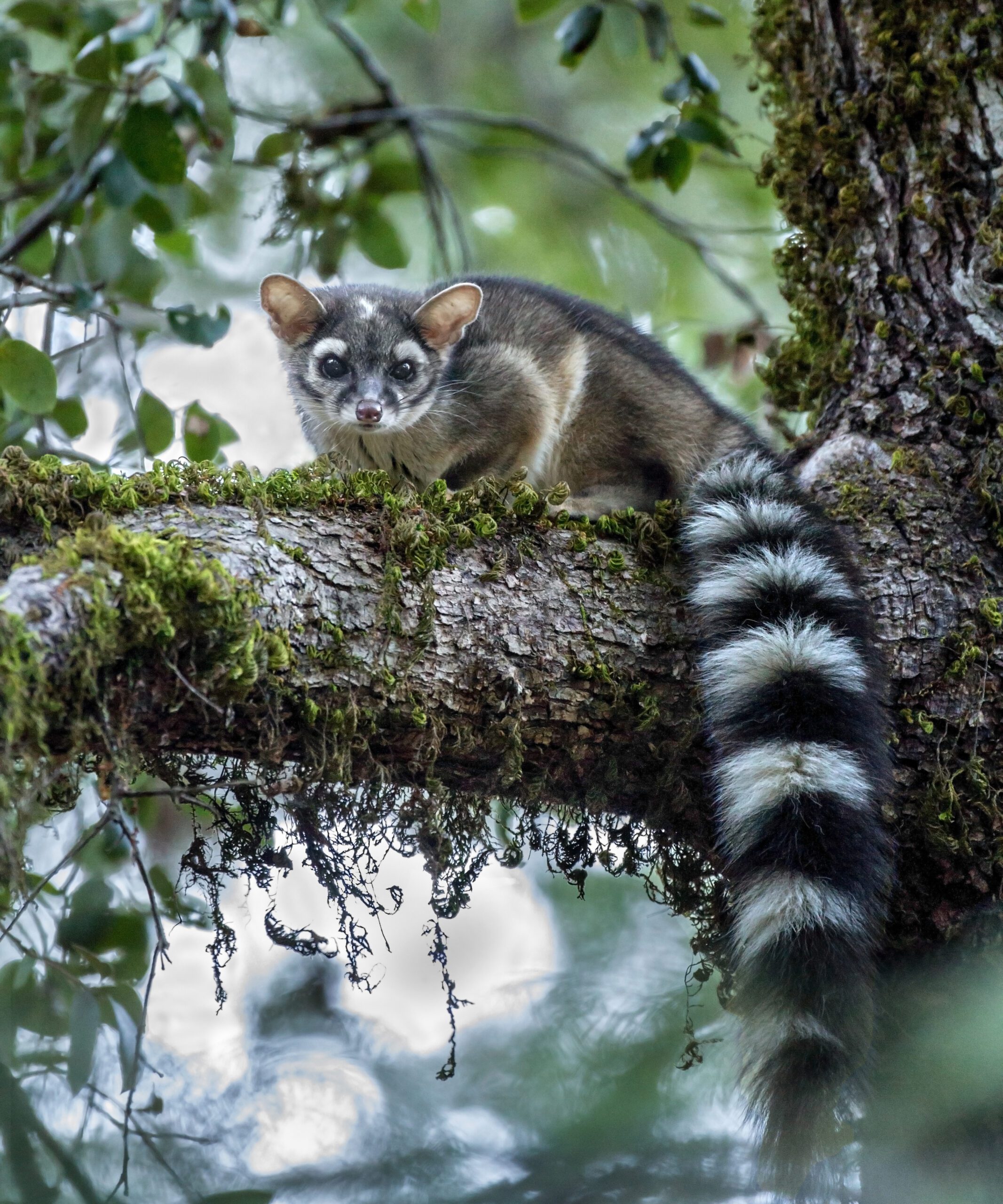| Scientific Name Bassariscus astutus Size 12-16.5 inches in length with a body weight of 1.8-2.9 pounds Habitat Riparian Zones, Evergreen Forest, Semi-oak Forest, Shrubland, Grassland, Rocky areas (eg. inland cliffs, mountain peaks), Semi-arid Desert, Artificial/ Terrestrial Status “Least Concern” IUCN status; “Sensitive” on Oregon’s Sensitive Species list; Not federally protected |
About
The Ringtail is a member of the Procyonidae (raccoon) family and about the size of a ferret. The tail is long and bushy with alternating black and white rings. The upper body is long, pale brown with a lighter underbelly. They have large black eyes, surrounded by white rings of fur, tall oval-like ears, set wide apart, and short legs with semi-retractable claws. Ringtails are a solitary species, meeting only for the purpose of reproduction and they’re excellent climbers capable of ascending vertical walls, trees, rocky cliffs and even cacti. Ringtails are nocturnal, but they may be active in daylight hours during the reproduction season. According to the Oregon Department of Fish and Wildlife, the Ringtail occurs in Oregon in “Lane, Douglas, Klamath, Jackson, Josephine, and Curry counties; and is an Oregon Conservation Strategy Species in the Coast Range, Klamath Mountains and West Cascades ecoregions”.
Why does it need our help?
The Ringtail are broadly distributed throughout the U.S. and Mexico. They can be found from southwestern Oregon and eastern Kansas, south through California, southern Nevada, Utah, Colorado, Arizona, Oklahoma, Texas, Baja California, and Mexico. Threats to the Ringtail include road and railroad construction, hunting and trapping, automobile impacts, habitat loss and fragmentation. The Ringtail is legally trapped for fur in Arizona, New Mexico, Nevada, Texas, and Utah. Although some states have banned the hunting of Ringtails, they still fall victim to traps set for other species. Also, the Ringtails’ secretive tendencies can make it difficult for officials to track their population, so there is no hard estimate of population trends. However, they’re always found in small densities and aren’t considered abundant. A rough estimate of the Ringtail population is 10.5 to 20.5 individuals/km². Survey methods for this nocturnal animal need to be developed in order to properly assess distribution and abundance.
Did you know?
- Ringtails have an upper elevation limit of 2,900 meters.
- The Ringtail reaches sexual maturity in 2-3 years and has a gestation period of 51-54 days.
- Ringtails are largely carnivorous with a diet consisting of mainly small mammals, such as rabbits, mice, rats and ground squirrels; however, their varied diet also includes birds, reptiles, insects, carrion, nuts, fish, and fruit.
- Ringtails are one of the smallest species of the Procyonidae family.
- Ringtails have an average lifespan of 7 years in the wild and 14.3 years in captivity.
- The hind foot can be rotated 180 degrees so that the ringtail can descend trees or rocks head first.




